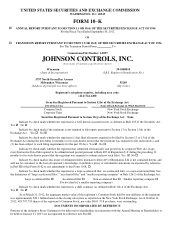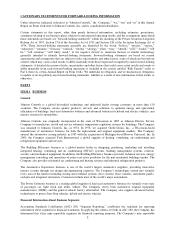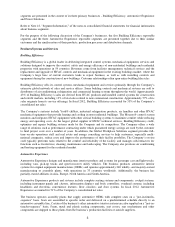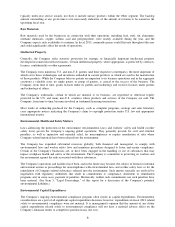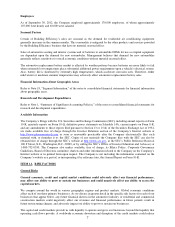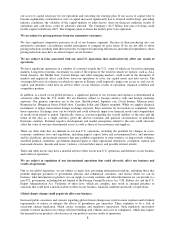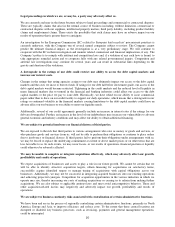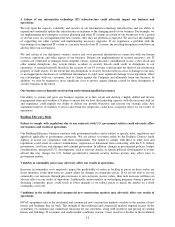Johnson Controls 2012 Annual Report Download - page 7
Download and view the complete annual report
Please find page 7 of the 2012 Johnson Controls annual report below. You can navigate through the pages in the report by either clicking on the pages listed below, or by using the keyword search tool below to find specific information within the annual report.
7
Employees
As of September 30, 2012, the Company employed approximately 170,000 employees, of whom approximately
107,000 were hourly and 63,000 were salaried.
Seasonal Factors
Certain of Building Efficiency’s sales are seasonal as the demand for residential air conditioning equipment
generally increases in the summer months. This seasonality is mitigated by the other products and services provided
by the Building Efficiency business that have no material seasonal effect.
Sales of automotive seating and interior systems and of batteries to automobile OEMs for use as original equipment
are dependent upon the demand for new automobiles. Management believes that demand for new automobiles
generally reflects sensitivity to overall economic conditions with no material seasonal effect.
The automotive replacement battery market is affected by weather patterns because batteries are more likely to fail
when extremely low temperatures place substantial additional power requirements upon a vehicle's electrical system.
Also, battery life is shortened by extremely high temperatures, which accelerate corrosion rates. Therefore, either
mild winter or moderate summer temperatures may adversely affect automotive replacement battery sales.
Financial Information About Geographic Areas
Refer to Note 18, ―Segment Information,‖ of the notes to consolidated financial statements for financial information
about geographic areas.
Research and Development Expenditures
Refer to Note 1, ―Summary of Significant Accounting Policies,‖ of the notes to consolidated financial statements for
research and development expenditures.
Available Information
The Company’s filings with the U.S. Securities and Exchange Commission (SEC), including annual reports on Form
10-K, quarterly reports on Form 10-Q, definitive proxy statements on Schedule 14A, current reports on Form 8-K,
and any amendments to those reports filed pursuant to Section 13 or 15(d) of the Securities Exchange Act of 1934,
are made available free of charge through the Investor Relations section of the Company’s Internet website at
http://www.johnsoncontrols.com as soon as reasonably practicable after the Company electronically files such
material with, or furnishes it to, the SEC. Copies of any materials the Company files with the SEC can also be
obtained free of charge through the SEC’s website at http://www.sec.gov, at the SEC’s Public Reference Room at
100 F Street, N.E., Washington, D.C. 20549, or by calling the SEC’s Office of Investor Education and Advocacy at
1-800-732-0330. The Company also makes available, free of charge, its Ethics Policy, Corporate Governance
Guidelines, Board of Directors committee charters and other information related to the Company on the Company’s
Internet website or in printed form upon request. The Company is not including the information contained on the
Company’s website as a part of, or incorporating it by reference into, this Annual Report on Form 10-K.
ITEM 1A RISK FACTORS
General Risks
General economic, credit and capital market conditions could adversely affect our financial performance,
may affect our ability to grow or sustain our businesses and could negatively affect our ability to access the
capital markets.
We compete around the world in various geographic regions and product markets. Global economic conditions
affect each of our three primary businesses. As we discuss in greater detail in the specific risk factors for each of our
businesses that appear below, any future financial distress in the automotive industry or residential and commercial
construction markets could negatively affect our revenues and financial performance in future periods, result in
future restructuring charges, and adversely impact our ability to grow or sustain our businesses.
The capital and credit markets provide us with liquidity to operate and grow our businesses beyond the liquidity that
operating cash flows provide. A worldwide economic downturn and disruption of the credit markets could reduce

